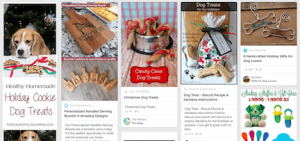You created all of this great content, so now what? How do you maximize engagement for that content using Marketo and other marketing automation platforms…and make it measurable?
In this post, I’ll cover best practice steps to maximize engagement with your marketing automation system using a triple touch methodology.
See how one company boosted engagement by 167% while realizing short term 12X gains.
“If You Build it, They Will Come”
This famous movie quote worked for Kevin Costner in Field of Dreams. Unfortunately for marketers, B2B content is not like the movies—it takes a little work to get your content in front of the right audience. Only if it was as easy as dropping the content in the resource center of your website.
If you are having challenges getting your audience to engage with your content, you are not alone. According to Sirius Decisions, 60–70% of B2B content created goes unused. 30% of Microsoft’s content had never been seen, based on some research by GerryMcGovern.com. And if it has been used, 52% of B2B marketers list measuring content ROI as a top challenge.
Does your organization have some of the following questions?
- “We have content but we don’t know if it’s working?”
- “Is anyone consuming it?”
- “How can we amplify the content so our message is reached?”
- “We need more content…but what do we do with it?”
Now that you know there is an issue, focus on amplifying the content. Don’t think you have enough content? Go take some inventory and repurpose some existing assets.
The Rule of 7 – the Foundation of the Triple Touch Methodology

As marketers, we all know the famous theory around the rule of 7—it takes 7 touches before someone converts (I’d argue it’s more).
The triple touch methodology applies this same concept to your content where the content is promoted strategically at least three times to increase engagement. In other words, don’t just drop the content in a resource center or send out a single email.
Leveraging that content across multiple channels will optimize results.
Adopt a Triple Touch Content Mindset
Developing a comprehensive strategy around where to distribute content should be part of your overall content plan. Much of what I explain sounds obvious but it is rare that organizations take a holistic approach to content amplification. Here are a few areas to consider.

1) Merchandise Your Content on Your Website
Fuel interest by merchandising content on your website, in your resource center and in related content areas. This process will help expose the content to your audience when they visit your site. Advanced marketers may consider using advanced segmentation to dynamically display content to the relevant audience.
In the below example, WordStream does a nice job merchandising a free report.

2) Boost Engagement with Dedicated Emails
When you develop new content, send targeted emails announcing the assets to all relevant subscribers. The email should have the sole purpose of driving engagement with that specific asset.
For example, if you just developed a new Best Practices white paper geared towards the financial sector, send an email offering that content to financial advisers. Make sure to use a nice, big Call-to-Action button to boost engagement. I’d recommend limiting any other links so the recipient is clear about what to do next.

The single goal of this email from Fusion is to drive engagement of the white paper.
3) Re-Purpose Content in a Monthly Digest Email
You’ve already created content in the form of blog posts and white papers. Now grab a few snippets of content and re-package that up as a monthly digest. If someone missed the dedicated email, the audience member can engage with the content in the digest. A few ideas:
- Highlight important blog articles.
- Feature new videos.
- Merchandise the latest white paper.

This digest email from Marketing Profs packages up several assets in a single email with small snippets of content.
4) Optimize the Journey with Evergreen Content
Consider putting that asset to work for the long term by adding it to your nurture streams. This method provides long-term results for your content and makes your nurture more conversational.

If you just created an “ROI Analysis Benchmark” report, you might consider adding that content to the late stage nurture stream. This ensures the recipient receives it at the right time.
Does this Triple Touch Approach Work? You Bet
Recently, we began working with Fusion, a leader in cloud communications. After setting the strategy, Fusion adopted the triple touch approach to begin amplifying its content.
As a first phase, Fusion began with a two-touch approach to begin measuring success. Leveraging coordinated web and monthly email digests, Fusion boosted engagement on the new asset by 167%, including a 12X single-day improvement (compared to previously launched assets).
When a third dedicated email touch was layered in the following month, Fusion experienced another engagement bump. Downloads increased 83% compared to when just two touches were used.

Bonus: Weave in Other Touches
Adopting a multi-channel approach to content distribution can get as complex as you desire. I’d recommend starting with the above basics and adding on as needed. When you are ready, consider a few of the below channels.
- Re-Targeting Ads: When someone visits your website and doesn’t act on the content promotion, re-targeting will continue to merchandise that content to that visitor as they visit other sites. More info from AdRoll. Some marketing automation solutions like Marketo tie directly into the platform for an automated touch.
- Direct Mail: Promote content in a direct mail. Adding direct mail to the mix is an additional investment but we’ve seen a 250% increase in engagement when content was promoted via both email and direct mail.
- Content Syndication: Need some help promoting your content? Use third party sites to syndicate your content to a wider audience. More info.
- Social Promotion: Put Facebook, Twitter, LinkedIn and other channels to work by promoting your content via social media.
- Email Signatures. This is an easy one. When you develop a new asset, create an email signature and then distribute to your Sales and Marketing teams so they can update their signature.
- Press Releases. Get your PR team involved by putting out press releases when select content is released.

Measure Content Success
Success doesn’t count unless you measure it. How you measure the results varies on your marketing automation platform, but here are a few areas to consider to measure volume AND impact on your business. What’s the difference between volume-based metrics and value-based metrics?
Volume-based metrics provide insights on how prospects consume content by measuring how many downloads your content assets are driving. Assuming your assets are gated, measure the number of monthly form completions.
Value-based metrics can help you understand how content is influencing revenue. These types of KPIs help justify marketing’s spend on content development. Of course, you’ll need defined Sales and Marketing processes to ensure closed-loop analysis like opportunity influence.

Get Started Today
In summary, adopting a triple touch approach (or more) will help you drive better engagement with your audience. If you have an approach that is working for your organization, I’d love to hear about it. Please comment below.
Business & Finance Articles on Business 2 Community(80)
Report Post





